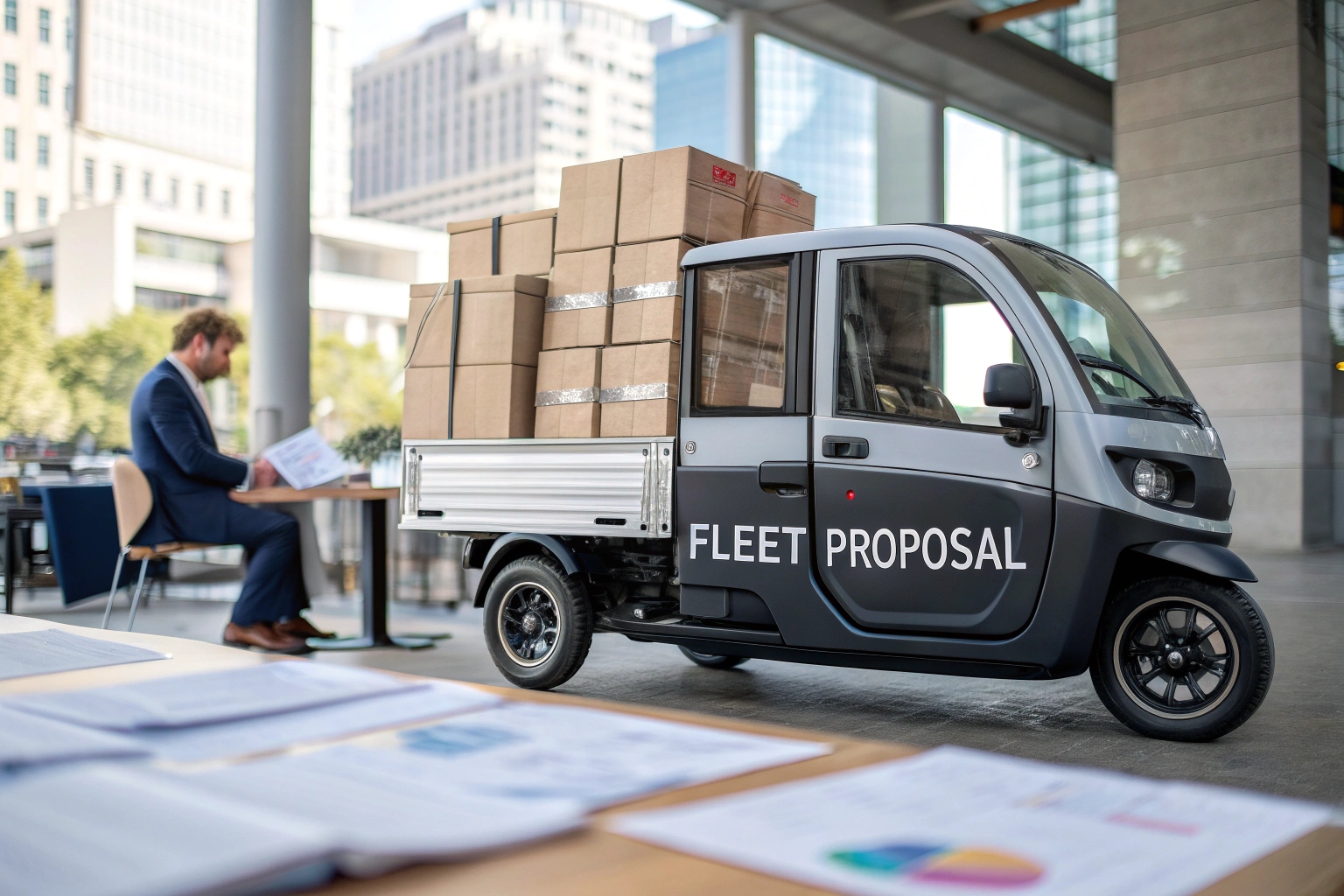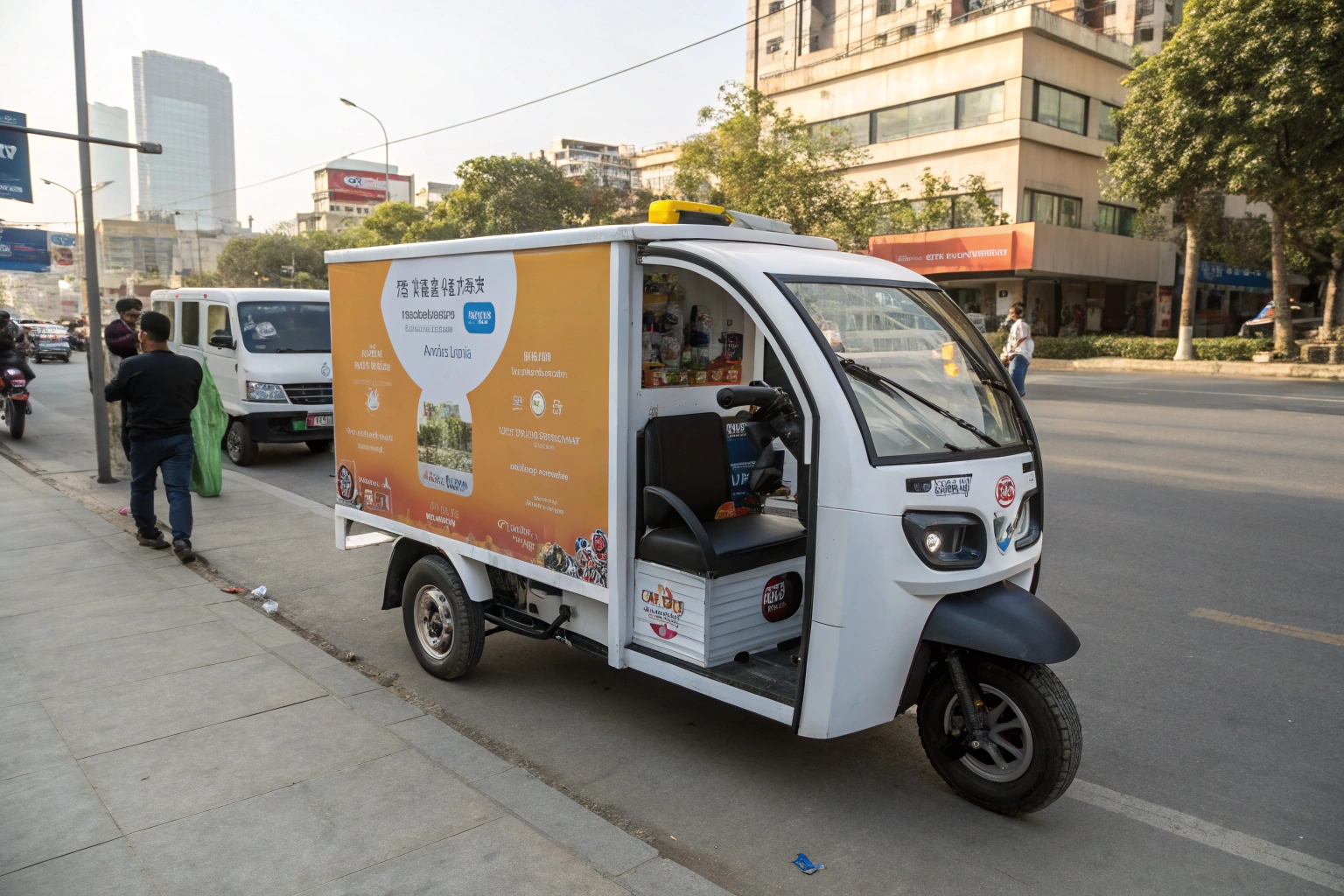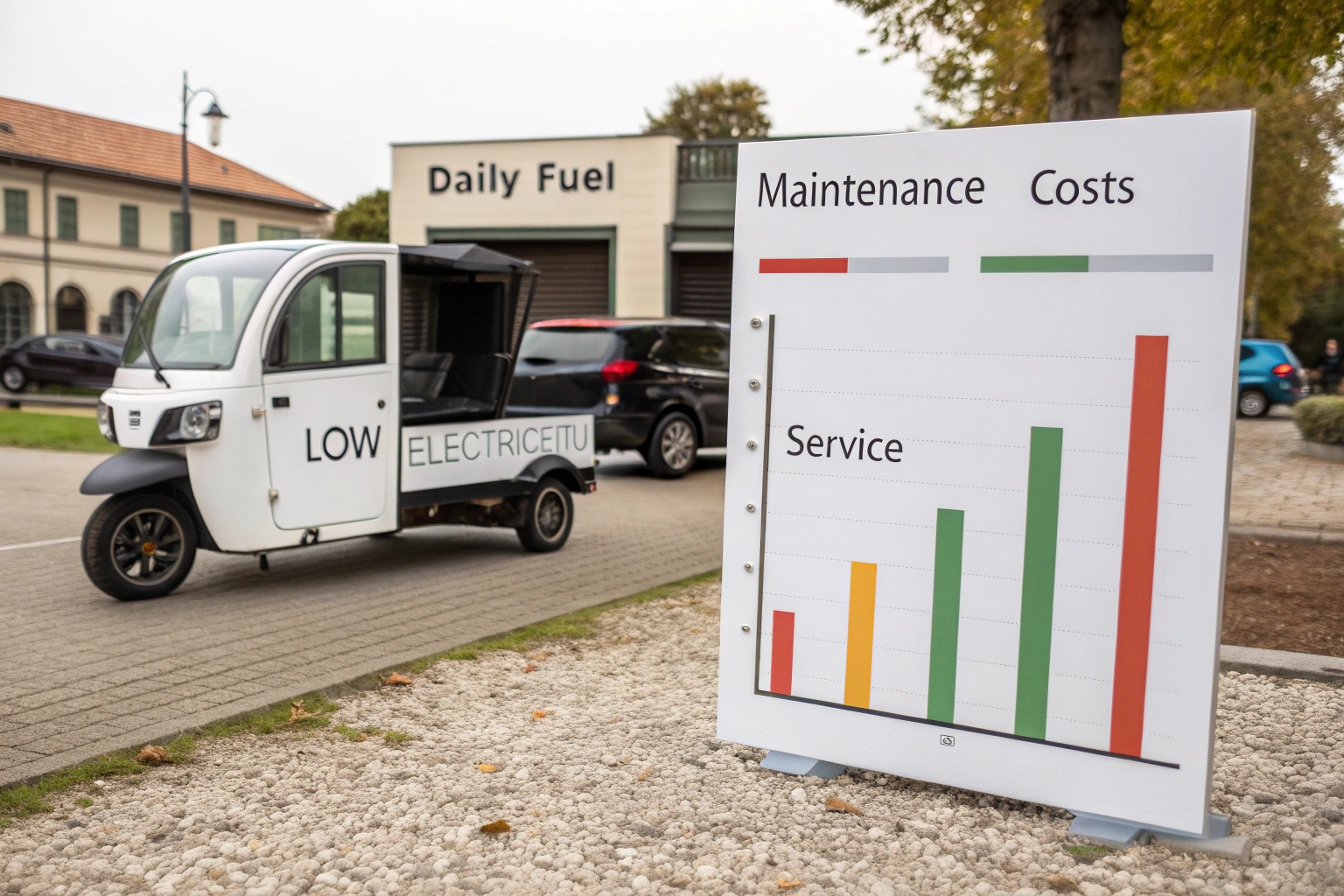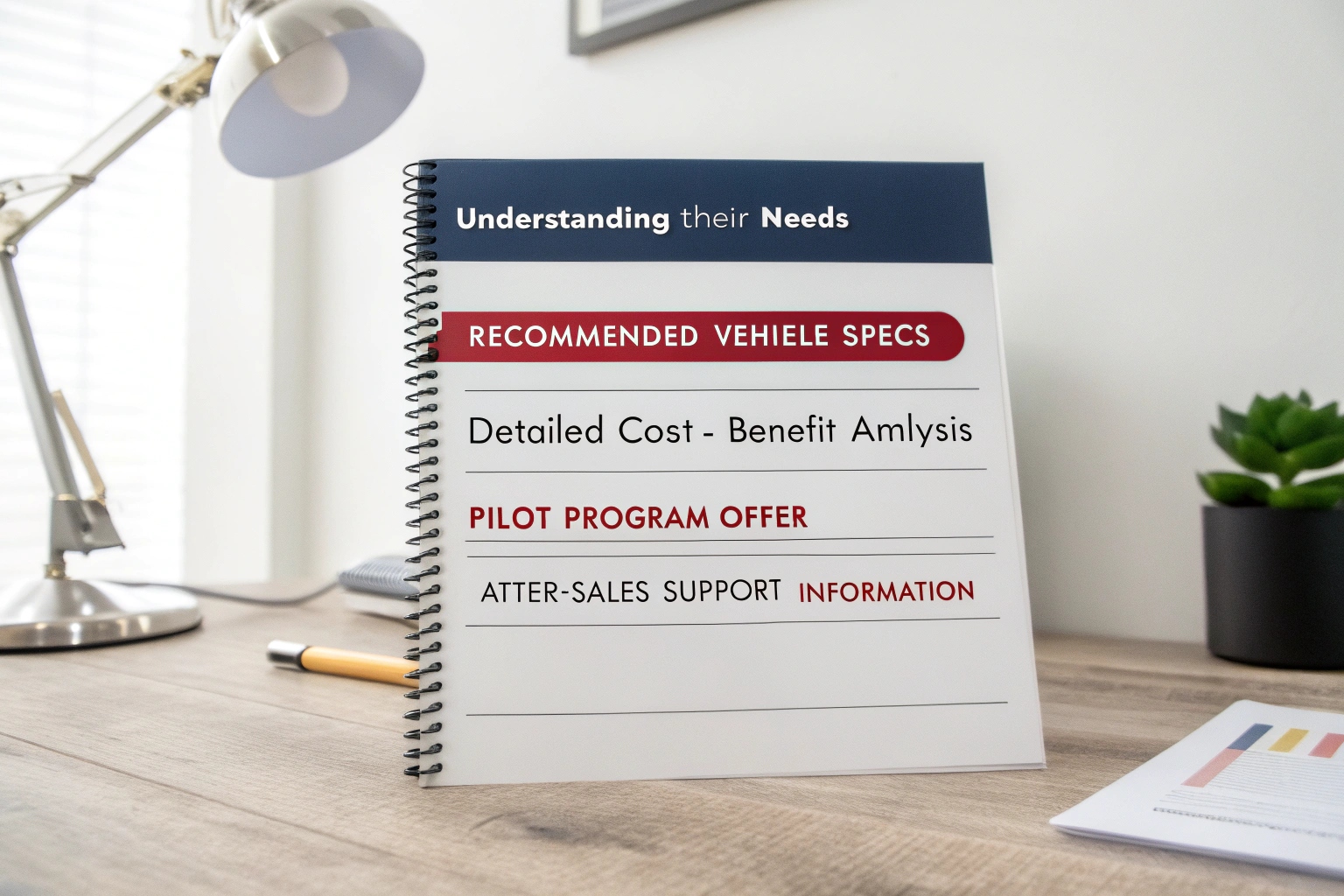Finding it tough to show courier services the value of electric trikes? They are losing money on fuel and getting stuck in traffic, but are hesitant to switch to a new technology. The key is to present a solid business case, not just technical specs.
To successfully pitch electric trikes, you must focus on their key business needs: lower operating costs, greater delivery efficiency, and a stronger brand image. Present a clear ROI calculation, address their concerns about range and reliability head-on, and provide a tailored fleet proposal.

From my factory, I've seen clients succeed when they stop selling a vehicle and start selling a business solution. Courier companies are practical; they care about today's profits and tomorrow's stability. Showing them that the switch to electric is not just a future trend but a smart financial move today is crucial. The change is coming, and you can either lead it or be left behind. Let's break down how to build a pitch that wins them over.
What Key Benefits Do Electric Trikes Offer to Local Courier Services?
Courier managers often dismiss electric trikes based on their size. This overlooks the huge operational advantages that directly boost their bottom line. Your pitch must focus on the benefits they truly care about.
Electric trikes offer couriers three main benefits: significantly lower operational costs with no fuel and less maintenance, enhanced urban agility to bypass traffic, and a customizable body that acts as a free mobile billboard.

When you talk to a fleet manager, you need to speak their language. That language is efficiency and profit. An electric trike isn't just a different type of vehicle; it's a superior business tool for the specific challenges of last-mile delivery. We need to frame the conversation around the problems they face every single day. Here’s how to do it:
Lower Operational Costs
This is your strongest point. An electric cargo trike has no fuel costs, no oil changes, and far fewer moving parts than a gasoline van or motorcycle. This means less money spent on daily operations and less time wasted in the repair shop. Their Total Cost of Ownership (TCO) drops significantly.
Greater Delivery Efficiency
Time is money in the courier business. An electric trike can navigate narrow streets, find parking more easily, and get closer to the delivery point than a van. This means each driver can complete more deliveries per hour, which directly increases revenue.
Stronger Brand Image
The cargo box on an electric trike is a blank canvas. It’s a moving advertisement that builds brand recognition across the city for free. An eco-friendly electric fleet also sends a modern, responsible message to their customers.
How Can You Present an ROI Case for Electric Trike Adoption?
Courier owners are driven by numbers, not by promises. They're skeptical of new technology if you can't clearly show them how it saves money. A powerful ROI presentation will prove the financial benefit of switching.
Present a clear Return on Investment (ROI) by creating a simple side-by-side comparison table. Contrast the daily fuel and maintenance costs of their current vans against the low electricity and service costs of an electric trike.

This is where you move from a sales pitch to a business consultation. You need to do the math for them. Before your meeting, ask for their average daily route distance and their local cost for fuel and electricity. By using their own numbers, the ROI becomes undeniable. The goal is to show them exactly how many months it will take for the electric trike to pay for itself through savings. This transforms the purchase from an expense into a smart investment.
| Cost Category | Typical Delivery Van | Electric Cargo Trike | Your Savings |
|---|---|---|---|
| Daily Fuel/Energy Cost | $15 - $25 | $1 - $2 | ~90% Lower |
| Monthly Maintenance | $80 - $120 | $20 - $30 | ~75% Lower |
| Annual Savings per Vehicle | - | - | $4,000 - $7,000 |
| ROI Calculation | - | - | Vehicle often pays for itself in < 18 months |
Note: Use local data for fuel and electricity prices to make your case more powerful.
What Concerns Do Courier Companies Have About Switching to Electric Trikes?
Even with a great ROI case, courier companies will have concerns. Ignoring their fears about range, durability, and charging will kill the deal. The best strategy is to address these common objections head-on.
Couriers mainly worry about real-world range, payload capacity and durability, and charging logistics. Addressing these three core concerns with practical data and operational solutions is key to building trust.

From our experience, over 90% of objections fall into these three categories. Don't wait for them to ask; bring these topics up yourself. This shows you understand their business and have already thought through the challenges.
Real-World Range
Their first question will be, "Will it last the whole day?" The answer is to match the battery to their routes. Analyze their average daily distance. For most urban routes of 50-80 km, our standard 60V 100Ah lithium battery is more than enough. Show them the options and prove you have a solution that fits their specific needs.
Durability and Payload
They will question if an electric cargo trike is tough enough. Highlight the reinforced steel frame, heavy-duty suspension, and a typical payload capacity of 300-500 kg. Explain that these are commercial-grade vehicles designed for work, not consumer e-bikes.
Charging Logistics
They imagine needing expensive, special charging stations. Clarify that the most efficient method is simply plugging the fleet into standard wall outlets overnight. This "charge while you sleep" model means every trike starts the day with a 100% full battery, with zero special infrastructure needed.
How Should You Structure a Fleet Proposal for Local Courier Services?
After a great meeting, the final step is the proposal. A simple price list is not enough; it feels generic and unconvincing. You need a professional document that summarizes your discussion and makes saying "yes" easy.
Structure your proposal with five key sections: an understanding of their needs, your recommended vehicle specs, a detailed cost-benefit analysis (your ROI case), a pilot program offer, and information on after-sales support.

A great proposal is a closing tool. It should be so clear and compelling that the courier manager can use it to convince their own boss or partners. It confirms you listened and have provided a thoughtful solution tailored specifically to their company. Here is a structure that we have seen work time and time again.
- Understanding Their Needs: Start by summarizing their business goals and challenges, like "reduce operational costs for your 15-vehicle urban fleet" or "improve delivery times in the city center."
- Recommended Solution: Propose a specific electric trike model and battery configuration. Explain why you chose it based on their routes and payload needs. Include customization options for branding.
- Financial Analysis: Insert your ROI and TCO comparison table here. This is the heart of your proposal.
- Offer a Pilot Program: De-risk their decision. Suggest they start with a trial of 1-3 units. This allows them to validate your claims in their real-world operations before committing to a full fleet.
- After-Sales Support: Detail your warranty, spare parts availability, and maintenance support. This shows you are a reliable long-term partner, not just a one-time seller.
Conclusion
Pitching electric trikes is about selling a future-proof business solution. By focusing on ROI, addressing concerns, and offering a clear proposal, you can lead the inevitable shift in urban logistics.

